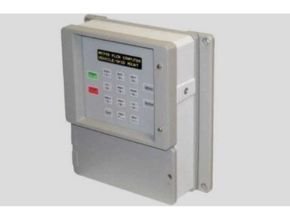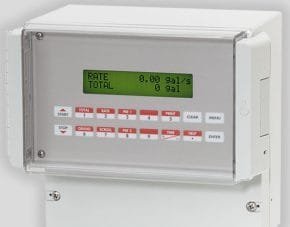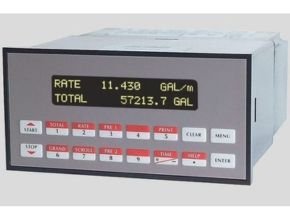Description KEPmeter MS-716 is a special version of the SUPERtrol-1 Flow Computer which is supplied in a vehicle mount enclosure. The MS-716 satisfies the instrument requirements for a variety of flow meters types in liquid applications. Multiple flow equations and instrument functions are available in a single unit with many advanced features. The alphanumeric display […]
General Information KEPmeter ST1-NET-FC Flow Computer can monitor actual net flow and total of any liquid. (Common applications include boiler and diesel engine fuel consumption measurement) Flow alarms are provided via relays and datalogging is available via analog (4-20mA) and serial outputs. KEPmeter ST1-NET-FC Features Displays Supply, Return and Net Rate/Total Supports Pulse Producing Flowmeters […]
KEPmeter SUPERtrol-I (ST1) Flow Computer offers advanced batching features for all types of flow batching systems. The ST1 is compatible with a variety of flow meters types in liquid applications. Multiple flow equations and instrument functions are available in a single unit with many advanced features. The isolated analog output can be chosen to follow […]
Description KEPmeter MINItrol (MRT) Rate/Totalizer is a 6 digit totalizer and rate meter with two level, 5 digit preset alarm control of total or rate. Inputs A & B have separate scaling K-factors. The totalizer can be programmed for “A” subtract “B”, “A” add “B” or A & B as separate totalizers, with display and […]
The Fluidwell F030 is a straight forward but easy-to-use batch controller. The operator can easily enter a batch quantity or execute repeating batches. During the batch, the preset value is displayed as well as the batched or remaining quantity. The automatic self-learning overrun correction will ensure an accurate batch every time. Fluidwell F030 Advantages Robust […]
General Information The Fluidwell F127 flow computer has been developed to calculate corrected differential liquid volume at normal conditions. This is calculated by measuring the uncorrected volumetric flow and actual line temperature in both the supply and return lines. These signals are processed with the thermal expansion coefficient algorithm stored in the flow computer. The […]






